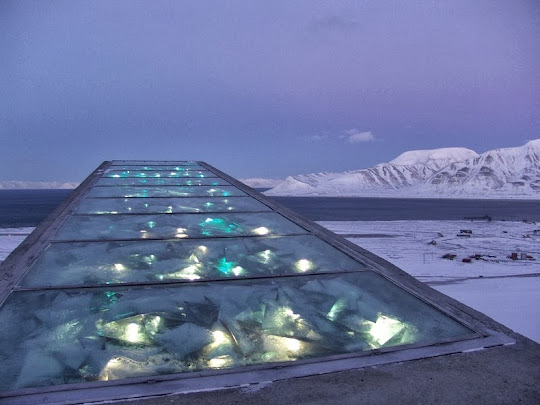Located approximately 1,300 kilometers south of the North Pole, on the Norwegian island of Spitsbergen, in an underground cavern, lies the Svalbard Global Seed Vault – a large fortress that can hold up to 4.5 million seed varieties. Often called the “Doomsday” Seed Vault, the Svalbard Seed Vault is the world’s insurance policy against botanical disasters, so that food production can be restarted anywhere on the planet following a regional or global catastrophe.

Although the popular press depicts the vault as a way of providing refugee for seeds in the case of major global catastrophe, it’s more frequently utilized when genebanks lose samples due to mismanagement, accident, equipment failures, funding cuts and natural disasters, which seems to occur with some regularity. There are some 1,400 seed banks around the world, but many are in politically unstable or environmentally threatened nations. In recent years, some national genebanks have also been destroyed by war and civil strife.
The vault was started by Cary Fowler in association with the Consultative Group on International Agricultural Research (CGIAR), and is construction was funded (US$9 million) entirely by the government of Norway. Storage of seeds in the seed vault is free-of-charge, and operational costs are paid by Norway and the Global Crop Diversity Trust. Primary funding for the Trust comes from organizations, such as the Bill & Melinda Gates Foundation, and from various governments worldwide
The vault was opened in 2008, and within the first year, around 400,000 seed samples were in storage. Samples came in from Ireland, the U.S., Canada, Switzerland, Colombia, Mexico and Syria. As of March 2013, the number of distinct samples rose to 770,000.
The vault is constructed 120 meters inside a sandstone mountain at Svalbard on Spitsbergen Island. The location was considered ideal due to its lack of tectonic activity and its permafrost, which will aid preservation. Being located 130 meters above sea level will ensure that the site remains dry even if the icecaps melt.
Seeds are packaged in special four-ply packets and heat sealed to exclude moisture. Locally mined coal provides power for refrigeration units that store the seeds at −18 °C (0 °F). Even if the equipment fails, at least several weeks will elapse before the temperature rises to the −3 °C (27 °F) of the surrounding sandstone bedrock. To maintain security, motion sensors and a webcam monitor the door. The control tower at the local airport has a direct view of the site, which is kept well lit during the dark winter months.
Running the length of the building's flat roof and down the front face to the doors of the building's concrete entry is a work of art that marks the location of the Svalbard Global Seed Vault from a great distance. The the Norwegian artist Dyveke Sanne was commissioned to make the light installation. The roof and vault entrance are filled with highly reflective stainless steel, mirrors, and prisms. The installation acts as a beacon, reflecting polar light in the summer months, while in the winter, a network of 200 fibre-optic cables gives the piece a muted greenish-turquoise and white light.













Source
